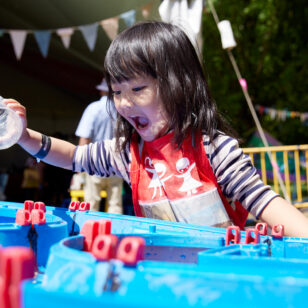
Image of Wild Things by Jillian Povarchook
Vancouver is blessed with spectacular natural surroundings, allowing visitors and residents alike the opportunity to commune with the region’s bounty.
If during this summer, you find yourself pausing during a hike in the woods or a walk on the Stanley Park Seawall and considering the views, a new exhibition at the Museum of Vancouver (MOV) will speak to you.

Photo Credit: Tara Lee
Wild Things: The Power of Nature in Our Lives, running until September 2019 at MOV (1100 Chestnut Street), is an interactive and highly creative look at local plants and animals. More particularly, it examines both the everyday relationship that people have with them and their interdependent responsibilities to sustain these “wild things.”

Photo Credit: Tara Lee
The exhibition, a co-presentation of the MOV and Nature Vancouver, is the work of Viviane Gosselin (co-curator & director of collections and exhibitions) and designers Daniel Irvine and Chad Manley (designers).
The first section, the “Encounter Room,” has an extremely compelling immediacy to it. It uses stories and memories recounted by a variety of individuals (designers, local residents, Indigenous community members) in order to get the visitor to think about their own connections and moments with nature.

Photo Credit: Tara Lee
The stories–often poetic moments of wonder, discovery, and revelation–are read off the exhibition walls, with the nearby exhibition space then bringing that told experience to life. The short narratives include the planting and life cycle of a hemlock tree, a witnessing of salmon crossing a stream, an unexpected deluge of rain in the city, an owl who chases the storyteller, and the passing down of hunting knowledge.

Photo Credit: Tara Lee
Striking uses of taxidermy (eg owls, bears, deer) locate the visitor in the encounter, as well as inventive design elements that mimic falling rain, salmon migrating, and the viewpoint of an overhead owl. Crawling spaces and other interactive components get the viewer physically immersed in the co-habitation with the natural world.

Image of Wild Things by Jillian Povarchook

Photo Credit: Tara Lee
After these experiences, Wild Things then transitions to the “Engagement Room,” a much more explicitly educational and interactive section based on various themes identified by an advisory group of Indigenous cultural workers, public health and forestry researchers, environmental educators, and architects. The room is organized into multiple stations (eg “web of relationships”) that share knowledge about local flora and fauna, have multiple learning drawers for pulling open and considering, and encourage visitors to consider their role in relation to urbanization, sustainability, and environmental degradation.

Photo Credit: Tara Lee
The exhibition is very much suited to families with children as there are all sorts of multimedia activities to get involved in, such as identifying animal paw prints, contributing to a large communal map, and mounting a shadow puppet production.

Photo Credit: Tara Lee
In order to mirror the content and messaging of the exhibition, reclaimed construction material was used for much of it as part of MOV’s move to increase upcycling in their exhibition creation.
There is also a host of scheduled interactive programming with Vancouver Naturalists on a variety of topics (eg July 21: “Identifying BC Wildflowers), July 28: “Get to Know Your City’s Bats,” September 1: “Bird Species of Stanley Park).
Further information can be found on-line.
















